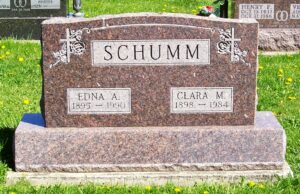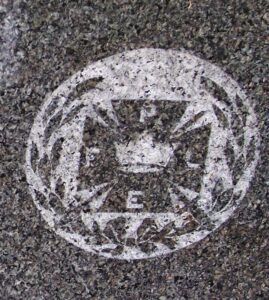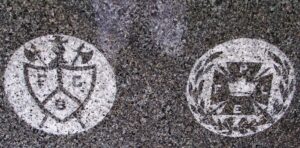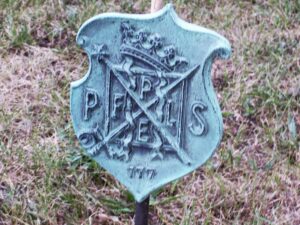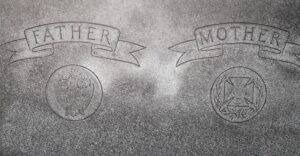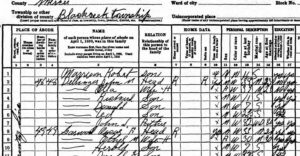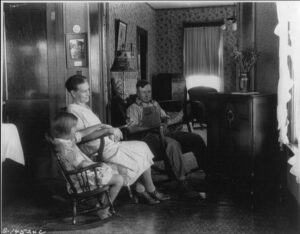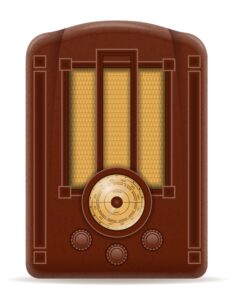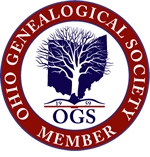I know what everyone is wondering right now–where did the summer go?
As usual, this summer has gone quickly and here it is, Labor Day weekend, which traditionally marks the end of summer. Technically we still have about 3 weeks of summer left although it looks and feels a little like fall already. The days are noticeably shorter, some leaves are coming down, the flowers are waning, the fall warblers are passing through, and the Monarch season is winding down. Yes, this year we again nurtured Monarch caterpillars and have released 50 Monarchs butterflies thus far, with another 24 in various stages of development. This has certainly been our best Monarch year yet!
The other day I was looking through some old online local newspapers, looking at the Mercer County news and happenings in early September 1910.
I saw that this part of the county was preparing for the Durbin Bean Bake! The same Labor Day Durbin Bake we are familiar with, although in 1910 they called it the Bean Supper and it was not held on Labor Day. Back then it was not held on a set date or day but occurred some time in early September. In 1910 it was held on the second Thursday in September and was their 13th gathering.
Bean Supper and Rennion [sic]
Trustee J.F. Smith, of the west end of the township, secretary of the Durbin bean supper and soldiers’ reunion association, was in town Monday arranging for the programs for their thirteenth annual meeting on the 8th inst. He expects it to be a cracker-jack as usual. The addresses will be made by Veteran J.C. Snyder, of Erastus; the irrepressible Pioneer A.H. Roebuck, of Mercer, and Mayor P.E. Kenney, of this city. [1]
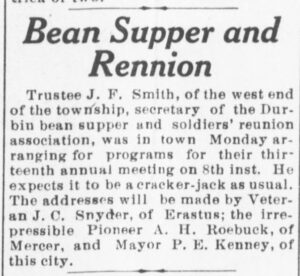
Celina Democrat, 2 Sep 1910.
Below is their schedule of events for the 1910 Bean Bake:
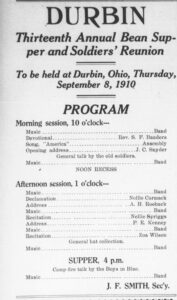
Celina Democrat, 2 Sep 1910.
However, their Bean Supper did not happen on the 8th, due to rain. The next issue of the newspaper reports:
Durbin Bean Bake Postponed
The heavy rains of Wednesday night and yesterday morning cause the unceremonious postponement of the Durbin bean bake and soldiers’ reunion scheduled for yesterday.
It is announced, however, that the program arranged for the occasion will be rendered next Thursday, the 15th, just as if nothing had happened.
Uncle Jack Snavely will attend to the other little side issues.
Yesterday’s program won’t spoil and the beans are insured against cyclones, forked lightning and earthquakes.
The date was just seven days too early, anyhow. [2]
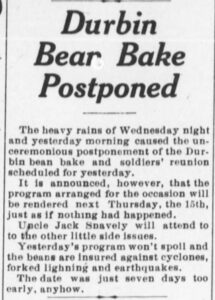
Celina Democrat, 9 Sep 1910.
The Durbin Bean Bake began in 1898 as a reunion of Civil War veterans. It continues to this day to honor all veterans and is a popular Mercer County Labor Day event. It free and open to the public and has games, attractions for children, food, and the beans are cooked all day and served about 4:00 p.m. It is held in Durbin Park, on Erastus-Durbin Road, just south of Mud Pike, in the southeast part of Liberty Township.
Another Durbin Bean Bake article in the Celina Democrat a couple years later, 27 August 1915:
BEAN BAKE
At Durbin Is Coming, Though the Date Has Not Yet Been Announced
“Uncle Jack” Snavely gave the Democrat his annual call last Friday while in town making the rounds to secure a lift for the annual Durbin bean bake and reunion which is the big fall event of Mercer county. The pioneers of the county always look for the date of the big Durbin gathering, which is scheduled for the forepart of every September, at least as long as Uncle Jack can make the rounds.
“I am past the four-score milestone,” said the veteran caterer, “and have cooked the beans for twenty-one annual reunions at Durbin, besides helping at many other. Uncle Jack’s fame as a bean bake dates back to the time of the Civil War, and he is quite proud of the fame the many years’ baking has placed upon him. Here’s trusting Durbin will have the usual big day at the 1915 reunion. [3]
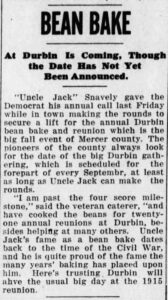
Celina Democrat, 27 Aug 1915.
Two of those articles mentioned Civil War veteran, Uncle Jack Snavely, who lived in Liberty Township. It appears he had attended all the Durbin Bean Bakes and always cooked the beans. Maybe he was one of the event’s founders.
Well that peaked my interest and I couldn’t help myself. I had to find additional information about Snavely, the man who attended every Durbin Bean Bake and who always cooked the beans there.
His name was actually John Snavely, but apparently everyone called him Uncle Jack. He was born in Ohio 1826 and served in the Civil War as a Private in Co. K, 88th OVI, enlisting and serving from July 1863-July 1865. [4]
According to the 1914 Appraiser’s Plat of Liberty Township, John Snavely lived in Section 24, on the north side of Schleucher Road, about a half mile from Erastus-Durbin Road. If this is the same person, he lived just a mile or two from the woods where the Durbin Bean Bake is held. And that makes sense.
“Uncle Jack” Snavely passed away on 27 July 1917, at the age of 91, and is buried in Buck Cemetery.
Part of his obituary:
…Uncle Jack was a member of D.J. Roop Post, G.A.R., but he will be best remembered for his interest in the annual soldiers’ reunion and bean bake at Durbin, which attracted thousands each year, and of which it may well be said, to use a popular expression, he was the “whole push.” [5]
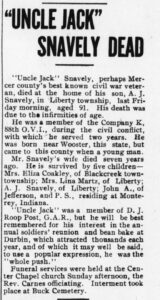
Celina Democrat, 3 Aug 1917.
The Democrat’s editor wrote a tribute to Uncle Jack Snavely with his obituary. Part of that tribute:
…But this thing that added more than all things else to Uncle Jack’s fame and popularity were the annual bean bakes at Durbin, Mercer county. He always had charge of the baking and he could do the work to a queens [sic] taste, too. No one ever presumed to challenge his ability in that respect and now that he has gone to join his comrades on the peaceful fields of paradise, the old soldiers are wondering who will take his place… [6]

Celina Democrat, 3 Aug 1917.
We occasionally go to the Durbin Bean Bake. Here are some of my photos from the 2018 Bean Bake:
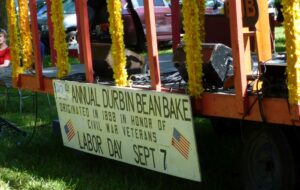
Durbin Bean Bake, 2018
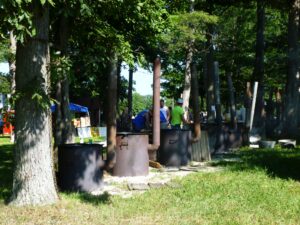
Cooking the beans takes all day. Durbin Bean Bake, 2018
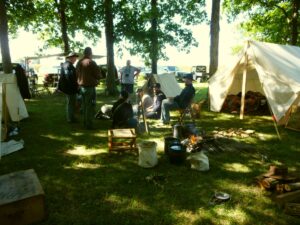
It began to honor Civil War veterans, so what better than a Civil War encampment. Durbin Bean Bake, 2018
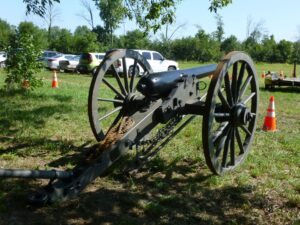
Durbin Bean Bake, 2018
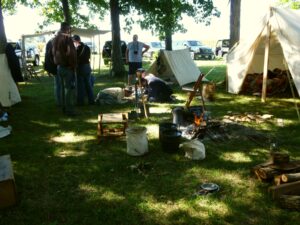
Durbin Bean Bake, 2018
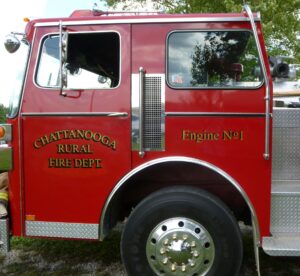
Durbin Bean Bake, 2018
Have a safe and enjoyable Labor Day weekend!
[1] Bean Supper and Reunion, The Celina Democrat, Celina, Ohio, 2 Sep 1910; Library of Congress.gov. (Note: inst. is an abbreviation for instant, meaning in the current month.)
[2] Durbin Bean Bake Postponed, The Celina Democrat, Celina, Ohio, 9 Sep 1910; Library of Congress.gov.
[3] Bean Bake, The Celina Democrat, Celina, Ohio, 27 Aug 1915; Library of Congress.gov.
[4] 1890 Veterans Schedules of the U.S. Federal Census, Mercer, Liberty, Ohio, ED 189, SD 2, p.3, no.37, John Snavely; Ancestry.com, viewed 1 Sep 2022.
[5] Uncle Jack Snavely Dead, The Celina Democrat, Celina, Ohio, 3 Aug 1917; Library of Congress.gov.
[6] Editor Sullivan’s Tribute to “Uncle Jack,” The Celina Democrat, Celina, Ohio, 3 Aug 1917; Library of Congress.gov.

